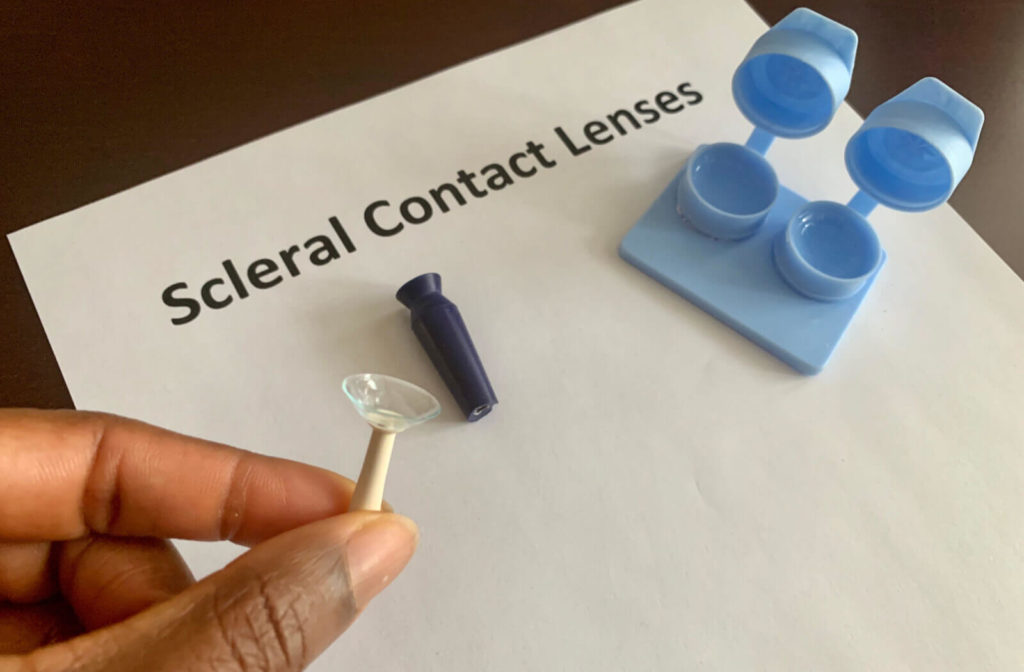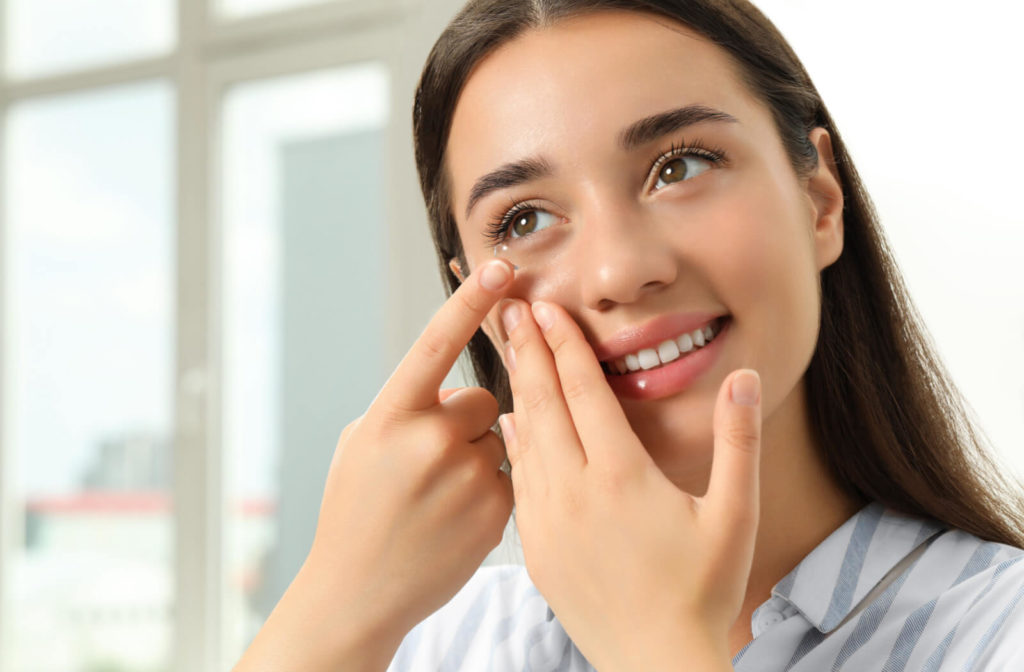The uncomfortable symptoms experienced with dry eyes can lead to redness and irritation in the eyes. Dry eye disease is a condition that can make even the simplest daily tasks difficult. Fortunately, there are contact lenses available that can help alleviate some of these symptoms.
Depending on the cause of your dry eye, your eye doctor can recommend soft, silicone hydrogel or rigid gas-permeable lenses.
What Is Dry Eye Disease?
Dry eye disease occurs when your eyes don’t produce enough tears or when the tears evaporate too quickly. This condition is complex, and there are several underlying causes that can affect tear film quality and production and increase tear evaporation, including:
- Age
- Medical conditions
- Medication
- Eye allergies
- Hormonal changes
- Environmental factors
- Eye surgery
Common include:
- Burning or stinging eyes
- A scratchy feeling in your eyes
- Redness
- Sensitivity to light
- Blurred vision
- Eye fatigue
- Watery eyes
- Difficulty wearing contact lenses
If you experience dry eye symptoms, your eye doctor can investigate and determine the underlying cause and recommend an individualized treatment plan to help you find comfort and clarity. Treatment often includes prescription eye drops that stimulate tear production, but many treatments are available, including contact lenses.
Although dry eyes can cause discomfort when wearing contact lenses, new contact lens technology is specifically designed to help alleviate dry eye symptoms.
Types of Contact Lenses for Dry Eye
Contact lens technology has come a long way in providing clear and comfortable vision for many eye conditions, including dry eyes. Several types of contact lenses can help reduce discomfort with dry eyes.
Soft Contact Lenses
Soft hydrogel contacts are flexible, contain water, and allow oxygen to pass through to the surface of your eye. They come in daily disposable and extended wear options.
Daily disposables are designed for single-day use and are discarded after each use. Since you’re using a fresh pair of lenses every day, there’s less opportunity for protein deposits and other irritants to accumulate on the lens surface, which can help reduce dryness.
Silicone Hydrogel Lenses
Silicone hydrogel lenses offer potential benefits over traditional soft contacts for reducing dry eye symptoms. These lenses allow for improved oxygen flow to the eye’s surface and have a higher moisture retention capacity, preventing evaporation.

Scleral Lenses
Scleral lenses are a specialty, gas-permeable lens for treating dry eye disease. They’re slightly larger than traditional lenses that rest on the eye’s sclera, vaulting over the cornea to create a fluid reservoir. This design helps provide relief and moisture for individuals suffering from dry eye symptoms.
An added advantage of the larger size of scleral lenses is that they can protect your eyes against external irritants such as dust and wind.
Other Ways to Reduce Dry Eye Symptoms with Contact Lenses
Finding contact lenses made of the right material, water content, and size for your eyes can greatly improve your comfort and visual clarity. However, in addition to selecting the right lenses, there are other strategies to make wearing contacts more comfortable, especially if you have dry eyes.
Lubricating Eye Drops
Lubricating eye drops or preservative-free artificial tears can help keep your eyes moist and reduce irritation for all-day contact lens comfort. Ask your eye doctor which brand is suitable for your contact lenses.
Take Frequent Breaks
If you’re working on a computer or doing intense focus work, take frequent breaks or reduce screen time to rest your eyes. This can help reduce strain and prevent your eyes from becoming too dry.
Lifestyle Changes
Simple changes to your lifestyle can also go a long way to improving your eye comfort:
- Avoid smoky, windy, or air-conditioned spaces
- Use a humidifier
- Wear sunglasses outdoors
- Sleep for 7–8 hours each night
Stay Hydrated
Drinking plenty of water throughout the day can help keep your body hydrated, which can also help alleviate dry eye symptoms. Aim for 8–10 glasses a day.
Care for Your Contact Lenses
Clean your contacts regularly using a solution that works well with your contact lenses, and don’t wear your contacts longer than recommended.
If you experience any problems or usual symptoms, remove your contact lenses and visit your eye doctor for a contact lens exam to assess your eyes and your contacts before continuing to wear them.
Contact Lenses for Dry Eye Relief
Dry eyes can make wearing contact lenses difficult. But with several contact lenses suited for dry eyes, such as soft hydrogel, silicone hydrogel, and scleral lenses, you can toss the idea of never wearing contacts again.
Book an appointment for a contact lens exam with Metro EyeCare to find the right contact lenses for your eyes. And with proper care of your contacts and following measures to reduce dry eyes, you can enjoy clearer vision and greater comfort.


